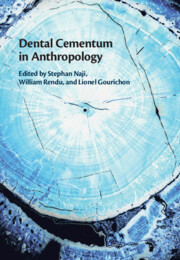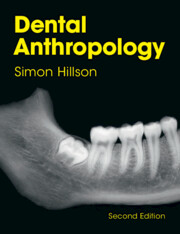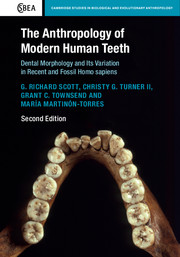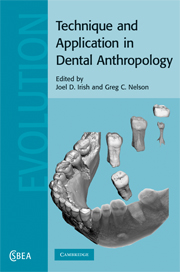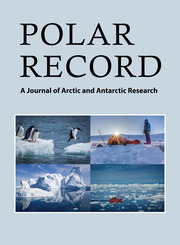Dental Cementum in Anthropology
£125.00
- Editors:
- Stephan Naji, New York University
- William Rendu, University of Bordeaux (CNRS)
- Lionel Gourichon, Université de Nice, Sophia Antipolis
- Date Published: February 2022
- availability: In stock
- format: Hardback
- isbn: 9781108477086
£
125.00
Hardback
Other available formats:
eBook
Looking for an inspection copy?
This title is not currently available on inspection
-
Tooth enamel and dentin are the most studied hard tissues used to explore hominin evolution, life history, diet, health, and culture. Surprisingly, cementum (the interface between the alveolar bone and the root dentin) remains the least studied dental tissue even though its unique growth, which is continuous throughout life, has been acknowledged since the 1950s. This interdisciplinary volume presents state-of-the-art studies in cementum analysis and its broad interpretative potential in anthropology. The first section focuses on cementum biology; the second section presents optimized multi-species and standardized protocols to estimate age and season at death precisely. The final section highlights innovative applications in zooarchaeology, paleodemography, bioarchaeology, paleoanthropology, and forensic anthropology, demonstrating how cementochronology can profoundly affect anthropological theories. With a wealth of illustrations of cementum histology and accompanying online resources, this book provides the perfect toolkit for scholars interested in studying past and current human and animal populations.
Read more- Presents state of the art knowledge in dental cementum studies, including biology, methods, and applications, in one volume
- Includes inter-disciplinary perspectives, demonstrating the potential of cementochronology and illustrating how different disciplines can interact to produce meaningful knowledge
- Contains accompanying online resources, including comparative cementum illustrations and analytical demographic algorithms
Customer reviews
Not yet reviewed
Be the first to review
Review was not posted due to profanity
×Product details
- Date Published: February 2022
- format: Hardback
- isbn: 9781108477086
- length: 420 pages
- dimensions: 251 x 177 x 25 mm
- weight: 1.01kg
- availability: In stock
Table of Contents
Part 1. The Biology of Cementum
Introduction: Cementochronology in chronobiology
1. A brief history of cemental annuli research, with emphasis upon Anthropological applications
2. Development and structure of cementum
3. Insights into Cementogenesis from human disease and genetically engineered mouse models
4. A comparative genetic analysis of acellular cementum
5. Pattern of human cementum deposition with a special emphasis on hypercementosis
6. Recent advances on acellular cementum increments composition using synchrotron x-radiation
7. Incremental elemental distribution in chimpanzee cellular cementum: insights from synchrotron x-ray fluorescence and implications for life history inferences
8. Identifying life-history events in dental cementum, a literature review
Part II. Protocols
9. Cementochronology for archaeologists. Experiments and testing for an optimized thin section preparation protocol
10. Optimizing preparation protocols and microscopy for Cementochronology
11. Cementochronology protocol for selecting a region of interest in zooarchaeology
12. Tooth cementum annulations method for determining age-at-death using modern deciduous human teeth: challenges and lessons learned
13. The analysis of tooth cementum for the histological determination of age and season at death on teeth of us active duty military members
14. Preliminary protocol to identify parturitions lines in acellular cementum
15. Toward the non-destructive imaging of cementum annulations using synchrotron x-ray microtomography
16. Non-invasive 3d methods for the study of dental cementum
Part III. Applications
17. Using Cementochronology to discuss the organization of past Neanderthal societies
18. Investigating seasonal competition between hominins and cave hyaenas in the belgian ardennes during the late pleistocene: insights from cementum analyses
19. Cementochronology to the rescue: osteobiography of a middle woodland woman with a combined skeletal dysplasia
20. Estimating a mortality profile of fisher-gatherers in Brazil using Cementochronology
21. Cementochronology: a solution to reconstructing past populations' mortality profiles using individual age-at-death estimates
22. Assessing age-related mortality at petra, jordan using Cementochronology and hazard modeling
23. Shaping age at death distributions by applying tooth cementum analysis to the early medieval graveyard of lauchheim (Germany)
24. Back to the root: the coming of age of Cementochronology
Index.-
General Resources
Find resources associated with this title
Type Name Unlocked * Format Size Showing of
This title is supported by one or more locked resources. Access to locked resources is granted exclusively by Cambridge University Press to lecturers whose faculty status has been verified. To gain access to locked resources, lecturers should sign in to or register for a Cambridge user account.
Please use locked resources responsibly and exercise your professional discretion when choosing how you share these materials with your students. Other lecturers may wish to use locked resources for assessment purposes and their usefulness is undermined when the source files (for example, solution manuals or test banks) are shared online or via social networks.
Supplementary resources are subject to copyright. Lecturers are permitted to view, print or download these resources for use in their teaching, but may not change them or use them for commercial gain.
If you are having problems accessing these resources please contact lecturers@cambridge.org.
Sorry, this resource is locked
Please register or sign in to request access. If you are having problems accessing these resources please email lecturers@cambridge.org
Register Sign in» Proceed
You are now leaving the Cambridge University Press website. Your eBook purchase and download will be completed by our partner www.ebooks.com. Please see the permission section of the www.ebooks.com catalogue page for details of the print & copy limits on our eBooks.
Continue ×Are you sure you want to delete your account?
This cannot be undone.
Thank you for your feedback which will help us improve our service.
If you requested a response, we will make sure to get back to you shortly.
×
